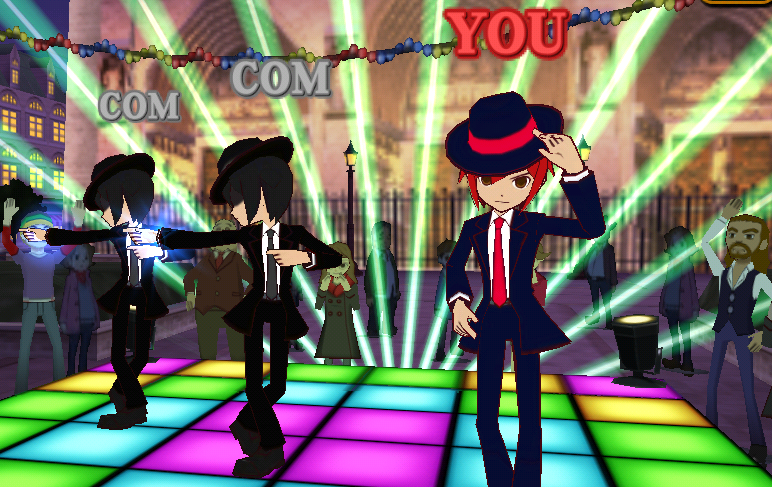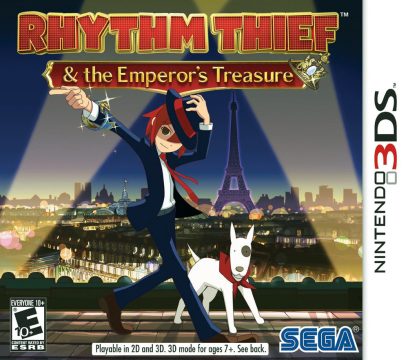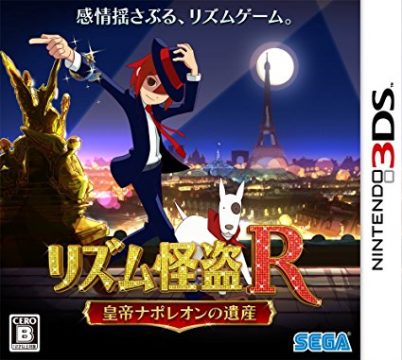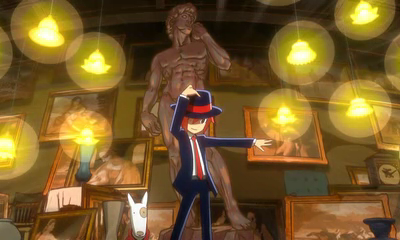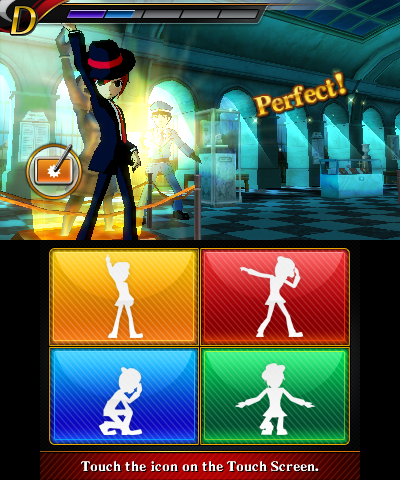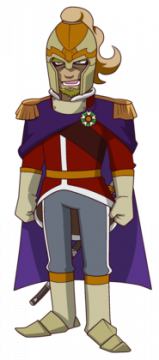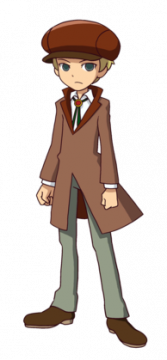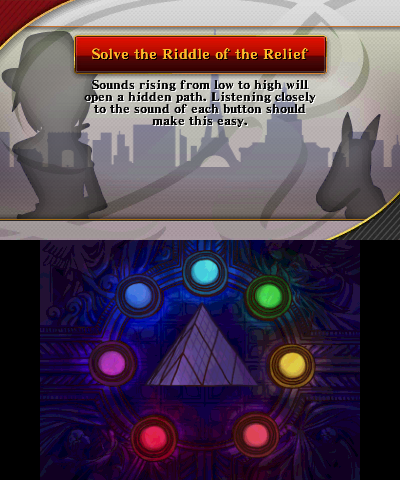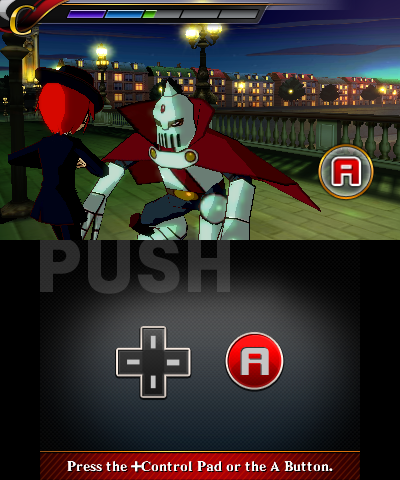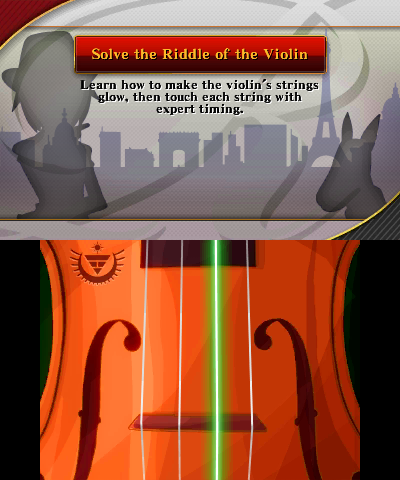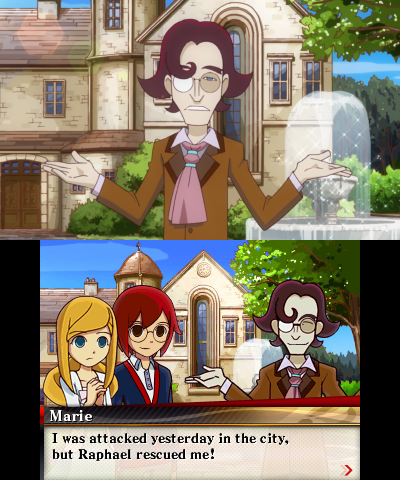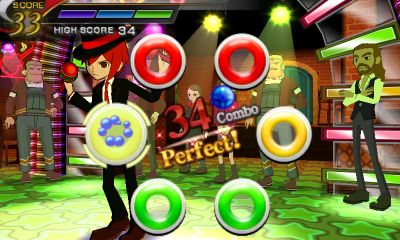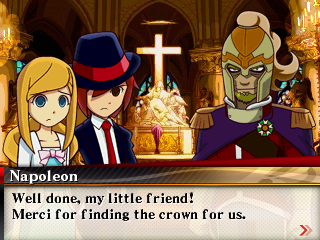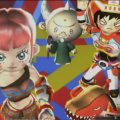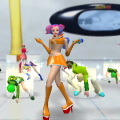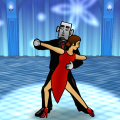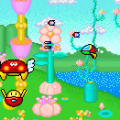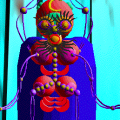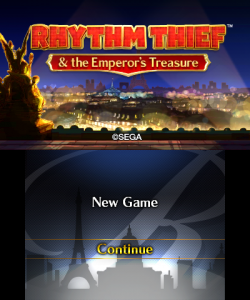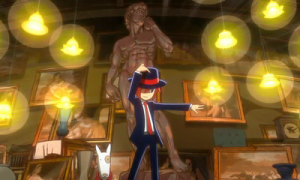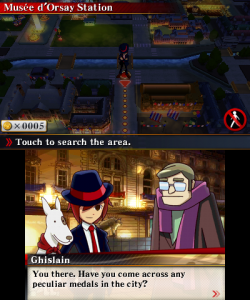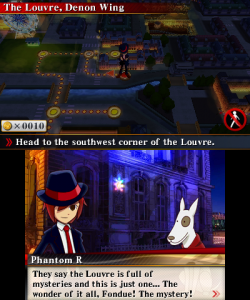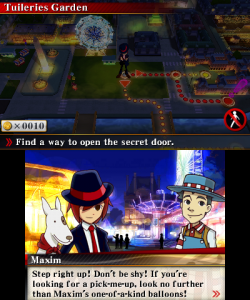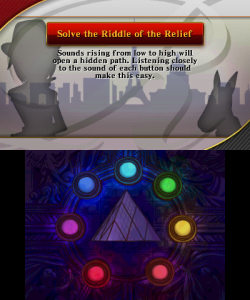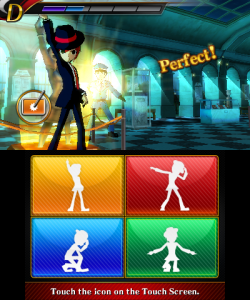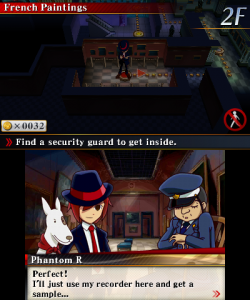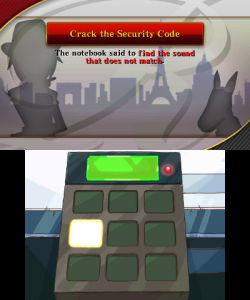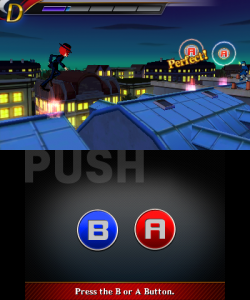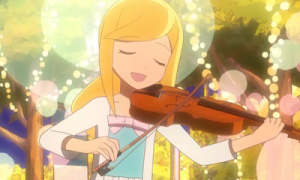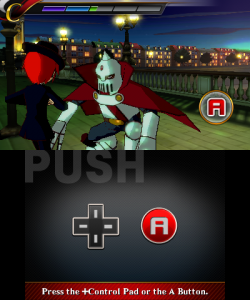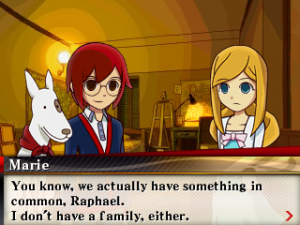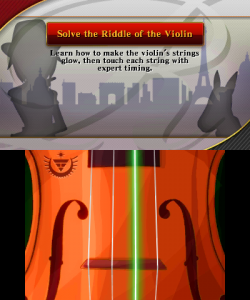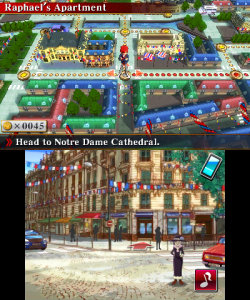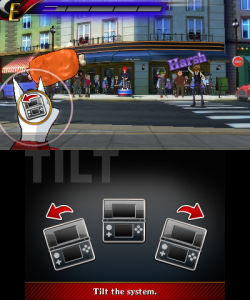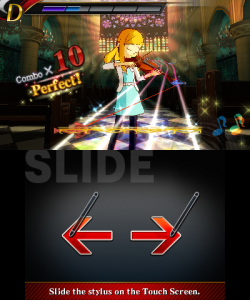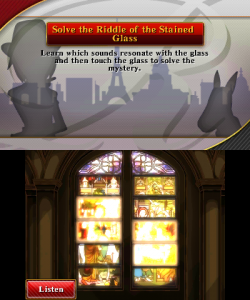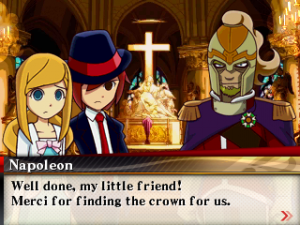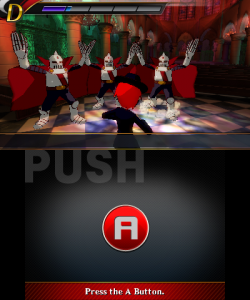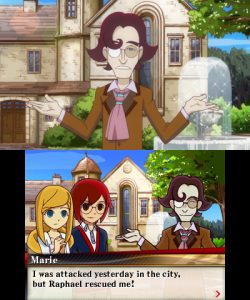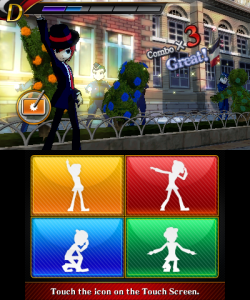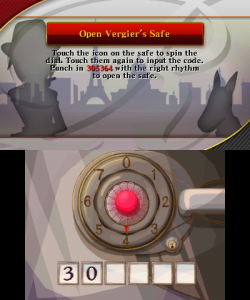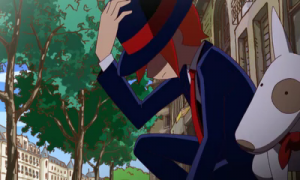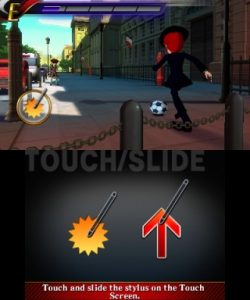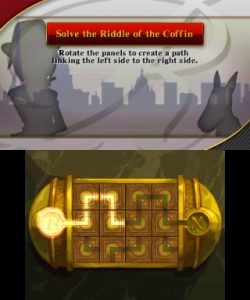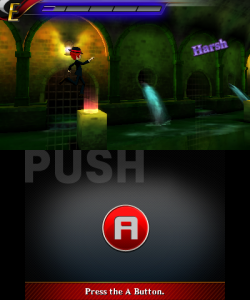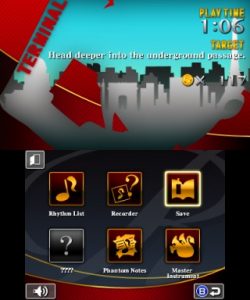Anyone familiar with Sega’s catalog of games knows how indispensable music has been to the company’s vision. While by no means universal, Sega games on the whole have a consistent musical influence: start with a retro 70s disco base, infuse it with some jazzy flair, and filter it through plain old pop music. The formula’s proven a success, and not just because the resulting music always proves so catchy and iconic. These tracks tend to evoke a rapturous feeling of celebration which has always gone hand in hand with Sega’s fascination with action and the sensation of movement.
You can see that fascination as early as OutRun, whose smooth jazzy beats were just as important to the game’s tone as its visuals and mechanical components; perhaps even moreso. But Sega didn’t stop there. Shortly after the Sega Genesis’ release, they enlisted the help of Michael Jackson in the form of Moonwalker, believing his style of music summed up the nascent console’s promises better than games alone ever could. This love affair continued well throughout the 90s, fueled by things like Michael Jackson’s (potential) involvement with Sonic the Hedgehog 3 and Tempo‘s early attempts to revive 70s spirit. It reached a peak during the Dreamcast era, home to games like Samba de Amigo, Space Channel 5, Rez, and even Jet Set Radio. Radically different games they may be, but they all espouse similar message of transcending our immediate situation in a pure celebration of everything life has to offer.
Cut to 2012 and the release of Rhythm Thief and the Emperor’s Treasure. Considering the legacy preceding this game, you might be inclined to think of Rhythm Thief as the culmination of Sega’s musical efforts – and you’d be right. It knows where to seek inspiration in Sega’s catalog of games, and the modifications it makes to their groundwork result in a game that’s bursting at the seams with style and flair.
Yet not all of the game’s sources of inspiration are quite that old, or even from Sega. The story (and a significant part of the game’s format), for example, takes a number of cues from Professor Layton. It begins with art student Raphael adopting the identity of Phantom R in the hopes of finding clues to his missing father’s whereabouts, but events escalate from there. In a short amount of time, he finds himself embroiled in an exciting conspiracy involving royal bloodlines, ancient treasures, and a clandestine army looking for the secret to conquer the world. A lot of this is relayed to the player through conservatively animated but neatly executed animated sequences. The major players include:
Characters
Raphael/Phantom R
The eighteen year old hero of the story, Raphael leads a double life. By day, he gets by as the average student who lives by himself. By night, he becomes Phantom R, the suave thief who breaks into museums and steals their art. Both of them enjoy the company of their canine friend Fondue.
Marie
Phantom R’s other sidekick. Like Raphael, Marie is estranged from her parents. But unlike Raphael, who at least knew his father, Marie has been an orphan her entire life. After leaving Marie in the care of a convent, the only things her mother left her were a violin and sheet music to go with it. Marie has spent her entire life practicing the violin so she can play this piece.
Napoleon
The main antagonist of the story. Although the story begins with Napoleon mysteriously rising from the dead, this version is based on the idea of Napoleon rather than the historical figure. Driven by imperial ambition, he amasses a secret army that he might reconquer France in his own name.
Inspector Paul Vergier
One of the story’s secondary antagonists. Inspector Vergier is the commissioner of the Parisian police force, and as such, he’s always hot on Phantom R’s trail, ready to capture him. Yet he’s more beleaguered than such a description would let on. Vergier sees Phantom R as a nuisance and you get the sense that he only wants to bring him in because he’s distracting from more important work the police could be doing.
Charlie Vergier
Another secondary antagonist and Inspector Vergier’s son, Charlie is an independent investigator who appears midway through the story with the intent of bringing Phantom R to justice. Unlike his father, Charlie is far more personally invested in catching Phantom R. As if to balance this out, his lack of professional experience makes him more incompetent and thus more prone to failure than his father.
From this description, it should be pretty clear that the majority of Rhythm Thief is a pastiche of every pulp fiction trend from the last century or so. You’ve got the big heists, the babies left abandoned on somebody’s doorstep, the hero infiltrating the big gala, the ancient conspiracy, etc. Safe as this may be, the game’s awareness of that fact allows it to use these tropes to imbue the experience with a noticeable amount of humor and levity, not to mention the slightest bit of nostalgic charm.
However, the story also does a decent job of foreshadowing the jouissance that the rest of the game is going to flesh out. Following Napoleon’s revival and the introduction of Phantom R, the narrative begins with Phantom R and his shadow doubles (more artistic devices than actual characters) defiantly dancing in front of the Arc de Triomphe. The rebellious tone of this performance is immediately reminiscent of Jet Set Radio and the youthful countercultural spirit that made it so famous, but there is a difference. Jet Set Radio renders overt social commentary, and as such, both it and its characters reflect at least some semblance of reality.
But with Rhythm Thief eschewing social commentary altogether, Phantom R is free to do away with any semblance of reality. Looking at Raphael, you get the sense that he’s using Phantom R to play the bold fictional character that ordinary life won’t permit him to be. Raphael has a definite purpose behind his actions, but Phantom R has as much fun with his motivations as he possibly can (what makes some artwork “necessary to steal” and others not?). The only reason he’s a thief is because interrupting the systems around him is the most effective way of injecting a little bit of style into his life. He doesn’t even care if his performances attract an audience. An audience would be convenient, yes, but so long as he can validate his own enjoyment of what he does, Phantom R couldn’t care less what other people have to think about him. Contrast this against the villainous forces in the game like Napoleon: so insecure that they demand the rest of the world recognize them and their glory. Great men like him are relics of the past, Rhythm Thief is quick to argue. They (and the ideologies they represent) have no place in this modern world of ours. All that matters is that you find an opportunity, no matter where that may be, to dance, live, and celebrate life.
No wonder that the game dedicates all its energy to awakening you to those dormant opportunities. Broadly speaking, gameplay in Rhythm Thief can be divided into two categories. There are the rhythm games, many of which play out similarly and with only minor modifications. These are (mostly) woven in the context of the story, sometimes in silly ways. The first game is a dance-off, as you swipe directions on the touch screen per the on-screen arrows. Others simply require that you hit a button (or buttons) in rhythm, like when you face off attackers or during chase sequences. Other games include ones where you need to strike one of four poses in order to hide beyond statues, or play Marie’s violin by tracing lines with the stylus. There’s even a game (that doesn’t even qualify as rhythm-based) where you control Fondue and need to tilt the system back and forth to catch (or dodge) things. As with Rhythm Heaven on the DS, the games where you need to press buttons or just tap the screen work out okay. The parts that requires anything more complicated on the touch screen are a little dodgy to keep in rhythm, but the games are so simple it’s rarely a problem.
Then there are the adventure sections. You’d think these parts would serve to break up the more involved action the rhythm games offer with something calmer, and while you’d be right about that, there’s another purpose at work here. Where the rhythm games present you somewhat obvious situations in which you can show off your style, the adventure sections encourage you to find these opportunities yourself in situations more mundane than what the rhythm sections will allow. Hence the greater variety of activities present outside Phantom R’s performances. There are simple areas where you can just talk to people, or tap around the various Parisian locales to get bonus items. Ignoring the exploration and focusing solely on the mini-games, you can be asked to do anything, just so long as it relates to the core theme. Examples range from timing a button press to decoding a pattern to rearranging parts of a musical score. That may sound banal in theory, but the game’s iconic sense of style guarantees they’ll be anything but.
So what gives Rhythm Thief its panache? A lot of it boils down to the obvious aesthetic reasons. For example, the solid choreography, when combined with intelligent cinematography and pacing, helps Phantom R become the ideal performer: fluid, dynamic, extremely well-suited to pull off these ostentatious tricks. Yet this shouldn’t discount the heavy lifting the music does, too. Rhythm Thief‘s admiration for jazz shines through with its reliance on brass and woodwinds, but the soundtrack tries out a variety of musical styles, like disco, classical music, and even a bonus samba track courtesy of Samba de Amiga. Despite the variety of songs (even within a single genre), the lively tempo and energetic yet counter-intuitively subdued score for each track ensures the game’s ability to consistently convey its youthful energy. Combine these with the game’s influences from Space Channel 5 – its arcade-y ethos, its novel use of inputs as musical notation, its emphasis on the protagonist (and the player controlling them) as performer – and you have a solid framework for a rhythm game.
As important as these factors are, equally important are the ways in which Rhythm Thief modifies that framework and urges the player to join in this performance. After all, it would be a shame if the game enticed you with all its fantastic spectacle and then erected all these barriers that prevented you from joining in the fun. That’s why Rhythm Thief goes out of its way to make all these minor modifications to well-known formulas with the goal of making them more inclusive.
There’s the clear pacing, for one. Rhythm games are careful enough to foreshadow the sequences you’re meant to follow with clear, immediately understandable logic (think Space Channel 5). But far more interesting is how the game modifies its difficulty and the consequences for that. Because you can miss a few notes and still get the highest ranking possible, there’s less emphasis placed on your mistakes. (While recovery from your mistakes can still be harsh, at least the game opens up a possibility for recovery that otherwise wouldn’t exist.) And with all rankings paying out the same reward (five coins you can spend on cinematics, music tracks, etc.), extrinsic reward is no longer a factor in how you play.
The collective result of all these adjustments is a change in how you see the game. A lot of the pressures that reduce bad rhythm games to elaborate Simon Says marathons are gone, and without them, the game’s theatrical flair is allowed to shine. Music and gameplay achieve a harmonious unity as you start to feel a powerful connection with both. Your worries melt away, and so does the world around you. All you’re focused on is putting on the best performance you possibly can. In other words, Rhythm Thief makes it desirable for you to achieve the rhythm game ideal.
This isn’t to say that Rhythm Thief is problem-free. For example, the more the story develops and the more the conspiracy thickens, the more the game risks losing its playful nature by taking itself too seriously. Compounding that risk are all the repeated rhythm games (i.e. almost everything in the game’s mid-section) that populate the middle to late stretch of the game. At least the game is prepared to mitigate this latter problem, remixing familiar material and regularly throwing curveballs into these scenarios to keep you on your toes.
Despite the cliffhanger the story ends on, Sega chose not to follow the game up with a sequel. That doesn’t mean they completely ignored the franchise. In late 2013 for Japan and early 2014 for North America, Sega released Rhythm Thief & the Paris Caper for the Apple Store. The game functioned as a shortened version of the 3DS original, presenting a leaner version of Phantom R’s journey and cutting out some of the extraneous rhythm games; basically anything that was repeated too frequently or made overly convoluted use of the 3DS’ gyroscopic features. In their place, Paris Caper added new accoutrements like exclusive tracks (and mini-games to accompany them), alternate costumes for Phantom R to wear (most of which are unlocked via in-app purchases), and Ouendan-esque sections where you have to touch certain areas in a certain order. It also lets you equip various partners, that give assorted bonuses during the levels. It runs at a much higher resolution than the 3DS version so the visuals are much cleaner.
This version of the game was generally liked by players, but the game was ultimately pulled from the Apple Store in September 2015. Since it requires accessing a server in order to run, even anyone who had previously downloaded the game will find it completely unplayable. A distressing situation, considering the game’s rarity. While the 3DS version can still be purchased digitally on Nintendo’s eShop (it was even included in a Humble Bundle), physical copies of the game are relatively hard to come by. So under some circumstances, the game has become much harder to acquire, but in a cruel, roundabout way, this fate is right in line with what Rhythm Thief is all about. Phantom R was never interested in getting a following. Just so long as he was remaining true to himself and achieving his own ideals as best he could, he was happy to perform. There’s no doubt the game is following in his footsteps.
Screenshot Comparisons
